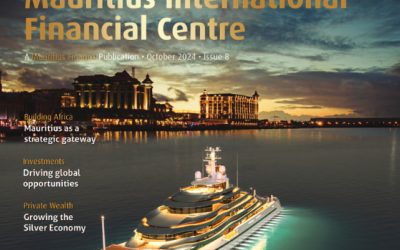What is a Trust?
A trust is a legally binding arrangement whereby a person (known as a settlor) transfers assets to another person (known as a trustee) who is entrusted with legal title to the trust assets, not for their own benefit, but for the benefit of other persons (known as beneficiaries – who may include the settlor) or for a specified purpose.
The establishment of a trust imposes onerous duties on the trustee which must be adhered to. The trustee must deal with the trust assets in accordance with the terms of the trust and/or the powers and duties conferred or imposed by law.
Assets that can be held in a trust
Theoretically, all types of property can be subject to a trust. This includes land, shares, debts, chattels, the benefit of contracts, partnership or business interests, life insurance and intellectual property, unless the policy of the relevant governing law or some statutory enactment or a contract has made the relevant property inalienable.
Uses of Trusts
Asset Protection
Trusts have been in existence for over 800 years. Since inception, the principal purpose for establishing a trust has been to protect assets from risk. Today this remains a key reason to establish a trust, particularly to ensure that assets are held in a secure and stable political environment.
The use of a trust in conjunction with an underlying company can be used to interpose an additional layer of confidentiality in a chain of ownership. The use of the trust and company combination may also enable trust assets to be held in a jurisdiction which does not recognize the trust concept.
Trusts may also safeguard assets against strategic risks, such as confiscation or expropriation by the State in the country of the Settlor’s domicile, residence or nationality. Trusts also can allow settlors the ability to shield themselves and their assets from future changes in legislation and to keep trust property secure from creditors. Trusts are finally used to protect assets or prevent the dissipation of assets as a result, for example, marriage breakdown or insolvency. As a further protection, a modern trust instrument can provide for the proper law of settlement, or its administration, to be moved to another jurisdiction in the event of political or strategic emergency in the country of the trustee’s residence.
Preservation of Wealth
Trusts can be used to preserve the continuity of ownership of assets (e.g., a business) within a family. By placing legal ownership of the assets in the trustee, specific family members may be able to continue to benefit from the assets and at the same time avoid/manage the potential fragmentation/dissipation of ownership amongst second and third generation beneficiaries. The use of a trust also eliminates the risk of a share of assets becoming owned outside the family upon the death of a beneficiary. This ensures that the assets can be enjoyed by future generations of the family.
Forced Heirship
Where a settlor disposes of assets during their lifetime by settling them on trust, the trust assets will not form any part of the settlor’s estate upon their death. This may enable a settlor to avoid forced heirship rules which may be mandatory under the laws of their domicile, residence or nationality and which would otherwise dictate the persons to whom and proportions in which a settlor’s estate will devolve.
Succession Planning
As discussed above, the ownership of assets passes to the trustee when they are transferred to the trustee. Accordingly, upon the death of a settlor there will be no need to obtain a grant of probate or similar formalities in order to deal with the trust fund. A trust, therefore, provides an efficient vehicle for the transfer of beneficial ownership interests on the death of a settlor.
Interests of beneficiaries under discretionary trusts do not constitute a separate asset but rather constitute a beneficial interest only in the assets held by the trustees. A trust structure may therefore assist in the achieving tax efficiency in the context of stamp duty or inheritance taxes which would otherwise be payable on the death of a beneficiary (this will vary on a case-by-case basis depending upon several factors and tax advice should always be sought).
How does a trust work?
The terms governing the trust (and how the trustee will administer it) are usually set out in a written instrument, often in the form of a trust instrument/deed. This benefits all parties as it will ensure that the settlor, the trustee and the beneficiaries know precisely what their respective rights and duties are. From time to time a protector may be appointed to supervise the trustee (more on this below).
The trust instrument/deed will be written under the law of a jurisdiction (potentially Mauritius, BVI, or Jersey or other offshore jurisdiction) which has an established trust law. The specific choice of jurisdiction will depend upon the settlor’s individual circumstances/wishes.
The key components of a trust
The 3 C’s
To create a trust the following elements are required:
- Capacity
The settlor of a trust must be of full age and capacity in order to create a valid trust. A company may make a trust provided this is permitted by its memorandum and articles of association.
- Certainty
The terms of the trust must be sufficiently certain. This requirement is often referred to as the ‘three certainties’ as it has three elements:
- certainty as to the intention of the settlor to create a trust
- certainty as to the property to which the trust is to attach; and
- certainty as to the persons who are intended to benefit from the trust
- Constitution
In general, no trust is created unless the legal title to the trust property has been vested in the trustees as the trustees must have control of the trust property. This is known as constituting the trust. If any formalities are required for this transfer, for example in the case of land or shares, then these must be complied with.
Settlor
The settlor is the individual who contributes assets to be held by the trustee in the trust. It is essential to the validity of a trust that the settlor dispossesses themselves of the trust assets and they may not, for example, simultaneously be a sole trustee and a sole beneficiary. The settlor may however be one of larger number of beneficiaries of the trust.
Some settlors have reservations about giving up control of their assets to a third party. To allay these concerns, it is possible for certain powers to be reserved for the settlor within the trust instrument/deed to ensure some limited control/involvement on specific key decisions (e.g., amendment of the trust instrument, removal of the trustee, appointment of investment managers and changing the proper law of the trust). Any reservation of powers to the settlor must be limited otherwise the validity of the trust may be called into question.
Trustee
The trustees of a trust are the individuals or company in which legal ownership of the trust property is transferred or vested and who are authorised to hold, administer and distribute such assets in accordance with the terms of the trust instrument and the trust law governing the trust.
A trustee is a “fiduciary” and is bound by “fiduciary duties” which are rules of law and equity governing how a trustee is to act. A trustee must exercise their powers solely for the benefit of the beneficiaries. The trust assets, however, constitute a separate fund and do not form any part of the trustee’s own estate.
There is no minimum or maximum number of trustees that a trust can have but in administrative terms, it is often unwieldy to have multiple trustees. Except where a company such as TrustQore is appointed to act as a corporate trustee, it is sensible to have a minimum of two individual trustees to provide continuity.
As a general principle, trustees may not delegate any of their duties or powers, unless authorised to do so either by statute or by the trust instrument.
It is common in almost all trust instruments to find provisions authorising the trustees as a body to delegate certain powers, in particular their investment, management and administrative powers.
Beneficiaries
The beneficiaries are the persons entitled to benefit from the assets held by the trustee on the trust (known as the trust fund). The beneficiaries may enjoy equal or unequal benefits, as the trust instrument prescribes or, in the case of a discretionary trust, as the trustee may determine. The trust instrument will usually include a list of the beneficiaries and contain powers to add to that list and to exclude individuals from that list.
Trust fund
At any time after settlement on trust of the initial assets (transfer of the legal title of those assets to the trustee which will comprise the trust fund) further assets may be added. Indeed, a common arrangement is to establish a trust with a nominal initial amount and subsequently to add more substantial assets over time which means that one trust may be sufficient to hold a variety of different assets (e.g., cash, shares, private equity and property).
The trust instrument/deed
The trust instrument usually sets out the following:
- the identity of the first trustees;
- the initial trust assets (in many cases trusts are created with a nominal sum, often USD10, and further assets are transferred to the trustees separately to hold subject to the trusts contained in the trust document);
- the identity of the beneficiaries;
- the period for which the trust will or may last;
- the manner in which the beneficiaries will or may benefit from the trust assets;
- the powers and duties of the trustees to manage the trust assets;
- powers relating to the appointment, retirement and removal the trustees; and
- any protections or indemnities for the trustees.
Letter of wishes
In addition to the trust instrument, it is also common for a settlor to indicate to the trustee their wishes as to the management and disposition of the trust fund in the future in a less formalised manner. The settlor’s expression is often contained in a letter of wishes which, although not legally binding, will generally be considered by the trustee to be of persuasive effect when performing their duties and, for example, determining to make a distribution out of the trust fund.
Protector
Although not required, the settlor may wish there to be a protector to ensure a degree of oversight over the trustee. Provisions can be included in the trust instrument which provide for the appointment of a protector (an individual or corporate entity usually with experience of dealing with trusts) without whose consent the trustees may not exercise certain powers and discretions.
If a protector is included, they may be given the power in the trust instrument to do the following:
- determine the law of which jurisdiction shall be the proper law of the trust;
- change the forum of administration of the trust;
- remove the trustees;
- appoint new or additional trustees;
- exclude any beneficiary; and
- withhold consent from specified actions of trustees either conditionally or unconditionally.
Types of trusts and their uses
The most appropriate structure for a trust structure will depend on the settlor’s particular circumstances and objectives. A brief introduction to some of the more common trust types are set out below:
Discretionary Trust
A discretionary trust provides a significant level of flexibility and is often the most efficient structure for both settlor and beneficiaries. Within the trust instrument, the trustee is given wide discretionary powers as to when, how much and to which beneficiaries they should distribute the income and capital of the trust.
These types of trust are useful if at the time of creation of the trust the future needs of beneficiaries cannot be accurately determined, or a degree of flexibility is required as to the future.
The beneficiaries are not regarded as having any direct legal rights over any portion of the trust fund (there is no entitlement to any such assets as there would be in the case of the principal beneficiary under a fixed interest trust (see below)) but only a right to be considered to benefit when the trustee exercises their discretion.
Fixed Interest in Possession Trust
Under the fixed interest trust, the trust instrument will identify a “principal beneficiary”. That individual will normally be granted a vested interest in the income of the trust fund throughout their lifetime and the discretion of the trustee regarding the disposition of the trust fund will be limited.
For example, the trust instrument may specify that the trustee is required to distribute all the income of the trust fund to a particular individual during that person’s lifetime and subsequently to distribute the capital of the trust fund in fixed proportions to named beneficiaries (such as the settlor’s children).
Charitable and Non-charitable Purpose Trusts
As mentioned above, for a trust to be valid there must be certainty as to the beneficiaries of a trust. A long-held exception to this general rule has permitted trusts to be established in favour of charitable purposes.
However, in certain offshore jurisdictions the concept of a non-charitable purpose trust has been introduced which suits corporate structures.
Non charitable purpose trusts can be used in several ways for commercial, succession or tax planning reasons, including:
- to hold the shares in special purpose vehicles (SPVs) used in connection with securitisations or off-balance sheet transactions where there is often a preference for the SPV to be “orphaned” from the parties to the transaction;
- to hold the shares of a private trust company which acts as trustee of a settlor’s family trust. Such an arrangement provides a greater degree of comfort for the settlor about the composition of the board of directors of that private trustee than would otherwise be the case if an unconnected trust company acts as trustee of such family trust. TrustQore can sit on the board of a private trust company whilst acting as trustee holding the shares in the private trust company through a non-charitable purpose trust. Such a private trust company can also be useful for family offices, as it can act as trustee of a number of linked family trusts;
- to hold shares in a family business to aid with succession, with the trustees acting neutrally and independently of family dynamics;
- for investing in family companies where economic performance is likely to be poor or uncertain; and
- for social benefit projects (both public and private) to enable certain community facilities or areas to be maintained, for the preservation of monuments, to provide financial support and to fund particular political purposes.
Accumulation and Maintenance Trust
An accumulation and maintenance trust is one where no beneficiary has a fixed entitlement to the benefits accruing to the trust for a certain period, during which time income is accumulated and becomes an accretion to capital.
The persons who are ultimately entitled to the trust capital may thus benefit from the accumulation of capital. The trust instrument may give the trustee a discretionary power to make distributions amongst the beneficiaries up to a specific age for their education, maintenance and benefit and to provide thereafter for a designated share of the trust fund to be distributed to each child on attaining a specified age.
An accumulation and maintenance trust may be particularly appropriate where the settlor wishes to benefit a group of children, for example, their grandchildren.







